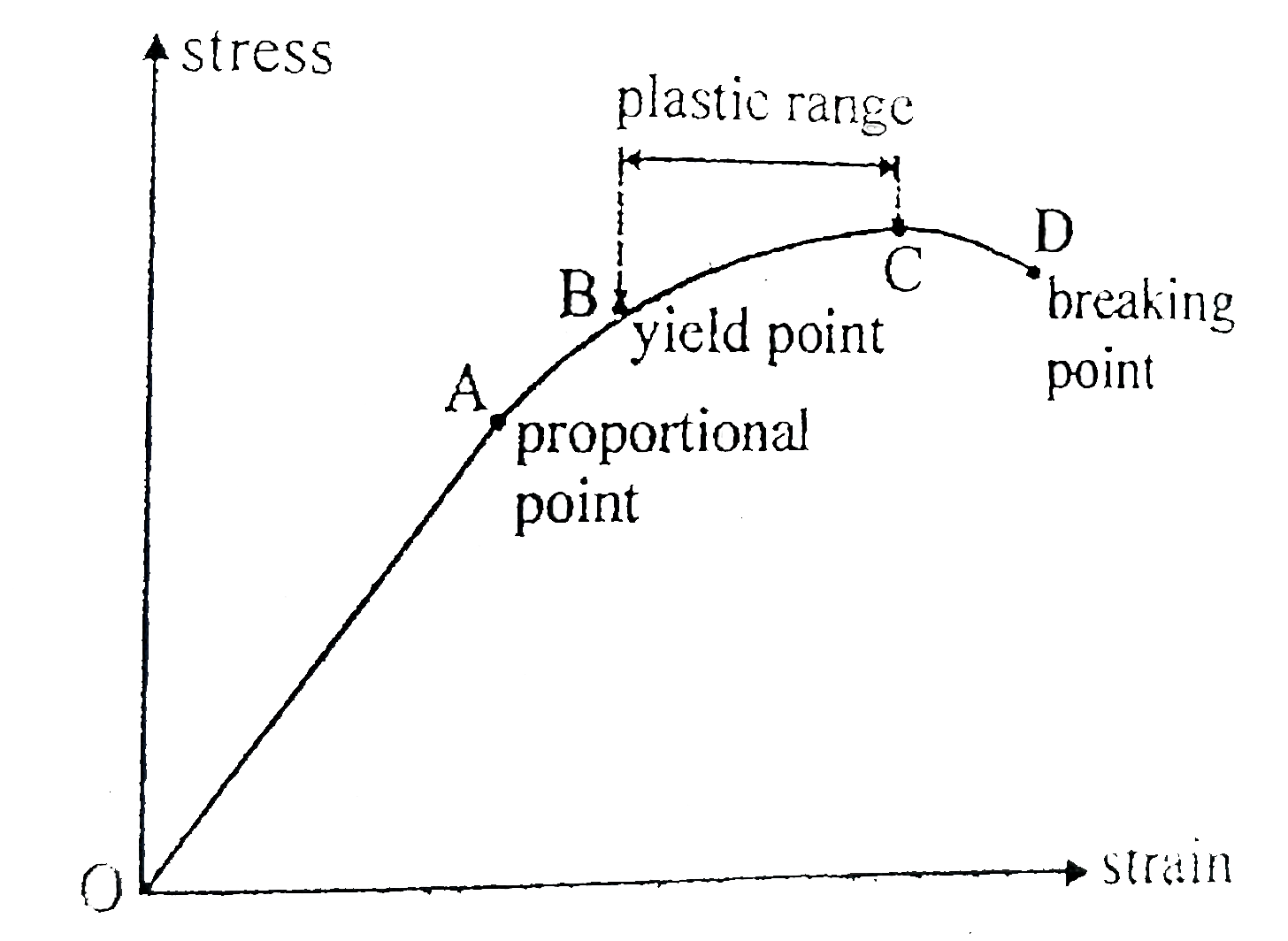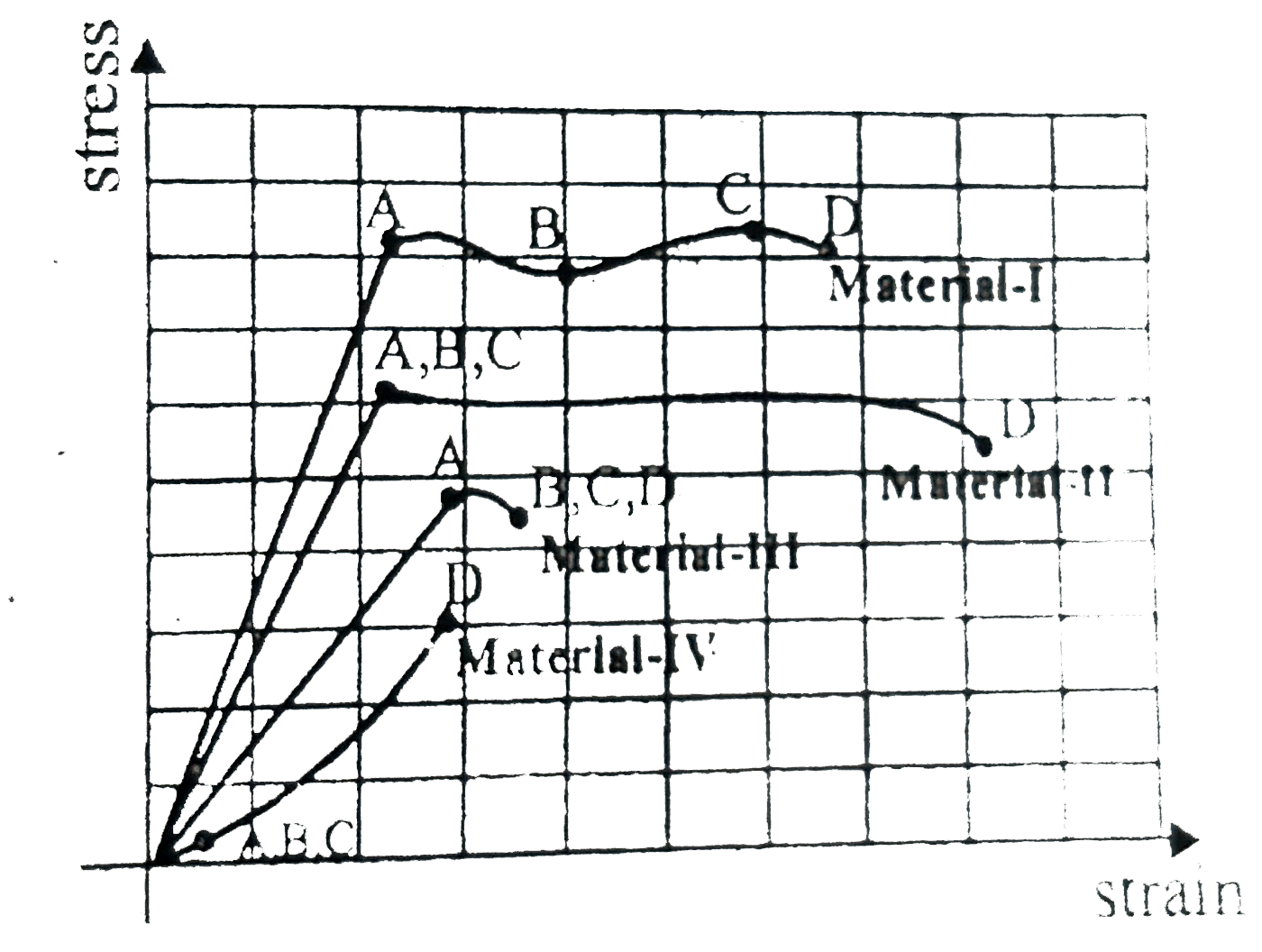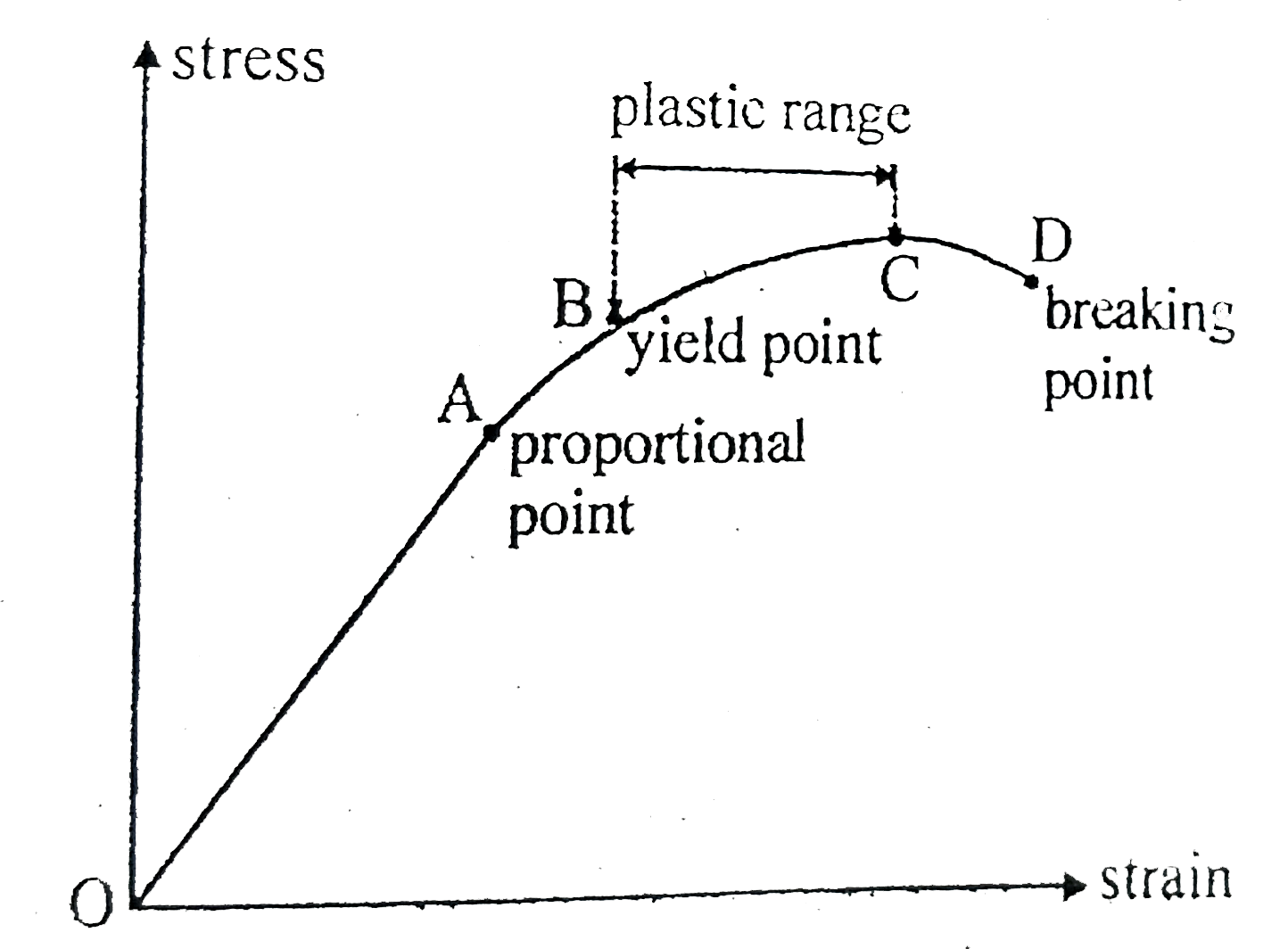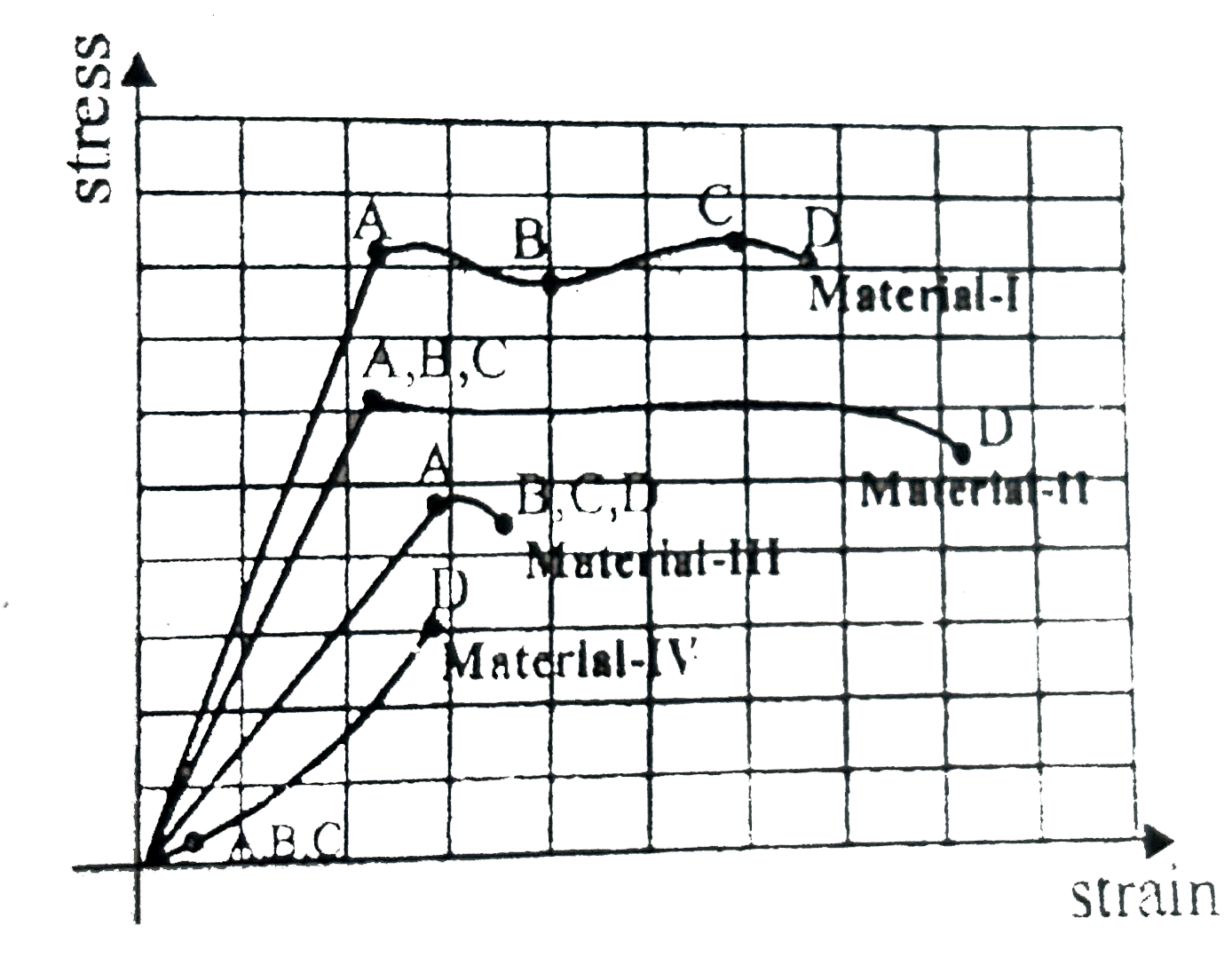Assertion: The stress-strain behaviour varies from material to material.
Reason: A rubber can be pulled to several time its original length and still returns to its origin
shape.
The correct Answer is:B
The stress-strain curves vary from material to material. These curves deforms with increasing loads. Rubber is an elastomer.
Topper's Solved these Questions
- MECHANICAL PROPERTIES OF SOLIDSBOOK - NCERT FINGERTIPSCHAPTER - MECHANICAL PROPERTIES OF SOLIDSEXERCISE - NCERT Exemplar
8 Videos
- MECHANICAL PROPERTIES OF FLUIDSBOOK - NCERT FINGERTIPSCHAPTER - MECHANICAL PROPERTIES OF FLUIDSEXERCISE - Assertion And Reason
15 Videos
- MOTION IN A PLANE BOOK - NCERT FINGERTIPSCHAPTER - MOTION IN A PLANE EXERCISE - Assertion And Reason
15 Videos
Similar Questions
In the following questions, a statement of assertion is followed by a statement of reason. Mark the correct choice as
(a) If both assertion and reason are true and reason is the correct explanation of assertion.
(b) If both assertion and reason are true but reason is not the correct explanation of assertion.
(c ) If assertion is true but reason is false.
(d) If assertion and reason are false.
Q. Assertion: The stress-strain behaviour varies from material to material.
Reason: A rubber can be pulled to several times its original length and still returns to its original shape.
View SolutionA copper wire of resistance R0 is strerched till its length is increased to n times of its original length. What will be its new resistance?
View Solution
Knowledge Check
Assertion: Above Curie temperature, a frerromagnetic material becomes paramagnetic.
Reason: When a magnetic material is heated to very high temperature, it loses its magnetic properties.Aboth Assertion and Reason are true and the Reason is the correct explanation of the Assertion.Bboth Assertion and Reason are true but Reason is not a correct explanation of the Assertion.CAssertion is true but the Reason is false.Dboth Assertion and Reason are false.Assertion (A): When a resistance wire is stretched so as to make its length double, its resistance becomes 4 times of its original value.
Reason (R ): Resistance of a conductor is directly proportional to its length and inversely proportional to its cross section area.ABoth (A) and (R ) are true and (R ) is correct explanation of the assertionBBoth (A ) and ( R) are true but (R ) is not the correct explanation of the assertion.C(A ) is true but (R ) is falseD(A) is false but (R ) is trueIf a wire of resistance 25Ω is uniformly stretched until its length becomes three times its original length then its new resistance is
A100ΩB225ΩC2.25ΩD122.5Ω
Assertion: Above Curie temperature, a frerromagnetic material becomes paramagnetic.
Reason: When a magnetic material is heated to very high temperature, it loses its magnetic properties.
View SolutionAssertion Upto the elastic limit, strain ∝ stress.
Reason Upto elastic limit, material returns to its original shape and size, when external force is removed.
View SolutionAssertion Upto the elastic limit, strain ∝ stress.
Reason Upto elastic limit, material returns to its original shape and size, when external force is removed.
View SolutionFigure shows the relationship between tensile stress and strain for a typical material. Below proportional point A, stress is directly proportional to strain which means Young's moudulus (Y) is a constant. In this region the material obeys Hooke's law.

Provided the strain is below the yield point 'B' the material returns to its original shape and size when the force is removed. Beyond the yield point, the material retains a permancnt deformation after the stress is removed. For stresses beyond the yeld point, the material exhibit plastic flow, which means that it continues to elongate for little increases in the stress. Beyond C a local constriction occurs. The material fractures at D (i.e. breaking point). The graph below shows the stress-strain curve for 4 different materials.

Material which is good for making wires by stretching is
View SolutionFigure shows the relationship between tensile stress and strain for a typical material. Below proportional point A, stress is directly proportional to strain which means Young's moudulus (Y) is a constant. In this region the material obeys Hooke's law.

Provided the strain is below the yield point 'B' the material returns to its original shape and size when the force is removed. Beyond the yield point, the material retains a permancnt deformation after the stress is removed. For stresses beyond the yeld point, the material exhibit plastic flow, which means that it continues to elongate for little increases in the stress. Beyond C a local constriction occurs. The material fractures at D (i.e. breaking point). The graph below shows the stress-strain curve for 4 different materials.

Material which is most brittle is
View Solution
